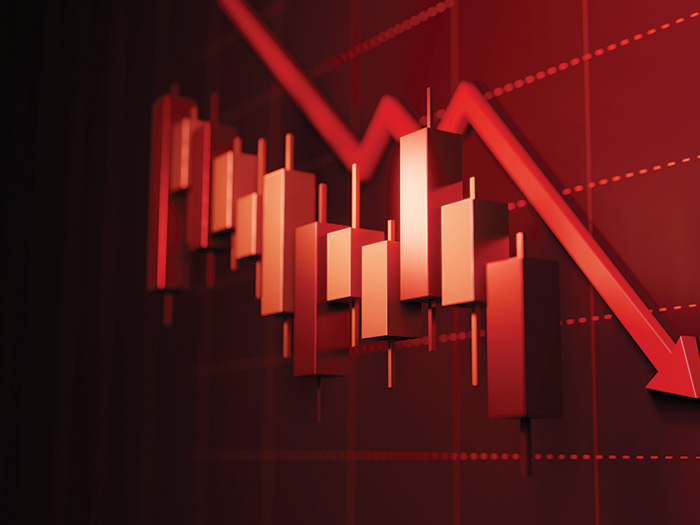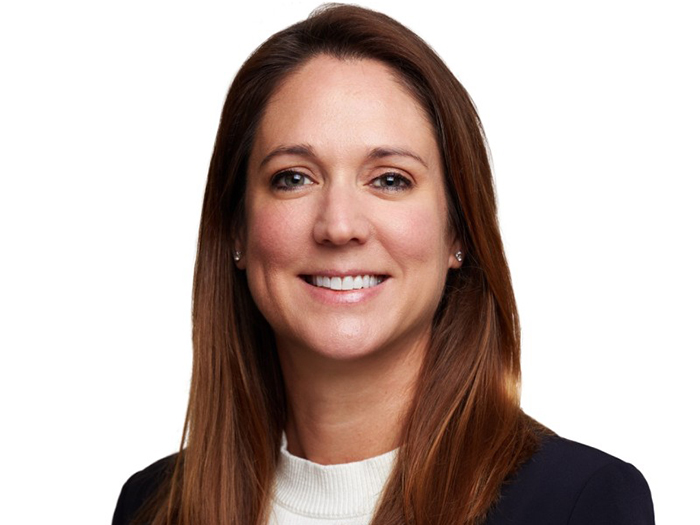Sponsored: AXA XL
What Insureds Must Know When Facing Economic Inflation Uncertainty

The U.S. inflation rate hit a record 40-year high in June 2022, at 9.1%. Economists posit this rise is a direct result of the COVID-19 pandemic and the ongoing events stemming from the last two years, including supply chain disruption, war in Ukraine and the labor shortage caused by The Great Resignation.
It makes sense: As the pandemic hit and businesses closed shop, consumers put a pause on buying goods and services. Manufacturing rates slowed. Then, as restrictions lifted, consumers searched out those goods and services, yet businesses could not keep up with demand as they hadn’t been manufacturing during shutdowns. Concurrently, the lack of labor has less operators to help fulfill orders, and the supply chain has felt the pinch.
Added to that, war has inflated gasoline prices worldwide, which continue to fluctuate as the crisis continues, further driving up costs for goods and services being shipped around the world.
Adding more fuel to the inflation fire are monetary policies that kept interest rates very low for years, which economists predicted would eventually cause inflation.
This impact from inflation has caused a certain level of uncertainty for operations.
“The topics around social inflation have been around for a while, but with more economic inflation, we find clients are trying to figure out how to navigate that world,” said Matt O’Malley, U.S. Country Manager, at AXA XL.
“Many haven’t had to deal with this economic inflation issue during their career and others haven’t seen it for decades. Now, there’s the uncertainty around negotiated prices. When clients go to pick up their materials, they’re finding the prices are higher. That impacts how they’re interacting with their clients,” he said.
In order to get their arms around this uncertainty, insureds and their risk management teams need to understand where to start. Knowing the risk areas and the impact of inflation on their business is step one in understanding how to overcome uncertainty.
Step two is finding a partner that will work toward solutions.
Here’s a deeper look at how economic inflation is impacting businesses, the risk areas organizations should be watching and how companies can start to eliminate some of the unknowns.
Inflation’s Impact on Supply Chain and What that Means for Insureds

Matt O’Malley, U.S. Country Manager, AXA XL
Supply chain risks are not new by any means, but economic inflation has caused insureds to look at their supply chain vulnerabilities in a new light. As the last few years have shifted how society operates, supply chain risk has shifted alongside.
“Supply chain issues have been vast, and they’ve been changing,” O’Malley said. “Initially, being able to manage materials going through ports was the challenge. That was late last year into this year. Then, shipping containers posed a challenge in terms of being able to move goods.
“Now,” he continued, “with warehouses filling, many insureds have found it challenging to continue to get and move their supplies, impacting how business is run and how much insureds must pay for supplies.”
Inflation is driving up pricing on materials, and it’s also impacting the way contracts are negotiated for shipments.
As O’Malley explained, insureds historically paid the negotiated and agreed upon price for materials once the shipment arrived. But now, as manufacturers work to meet global demand and supply chain operators continue to ship more goods with less workers, there’s a level of uncertainty to contend with.
“This is something a lot of organizations have never dealt with, because the negotiated price has always been the price they had to pay when materials arrived. But now, it’s not always the case,” he said.
He gave a real life example: An insured arrived to collect their shipment only to be told the price to pick it up was multiples of the negotiated price. When the insured connected with the supplier, the supplier said they would take back the product and sell it at even higher price to someone else.
“From the insured’s perspective, this makes it really hard to engage with their clients and for them to really figure out how they should be pricing the products,” said O’Malley.
Of course, many insureds are taking the right measures to mitigate the issues stemming from supply chain risk. They’re working to build in redundancies to help manage through all this uncertainty and disruption.
“One of the aspects of holding additional materials, rather than selling them, creates this challenge for insureds’ own economics and their profitability,” O’Malley said. “So, these are some of the discussions that we’re hearing from risk managers, in terms of how much of the cost are they able to pass through to their customers or how much of it is going to be an impact on their margin. Which ultimately impacts some organizations’ profit expectations, but then, also how and where they deploy their capital across their organization.”
How Inflation Is Affecting Property Valuations
Another area inflation is creating uncertainty for insureds is in property valuations. From that property perspective, a lot of focus has turned toward the cost to rebuild structures, especially as natural catastrophes loom each year.
From the wildfires in California, which estimated a $70 to $90 billion in economic losses in 2021, to the Atlantic hurricane season, a whopping $145 billion in damages last year, and the floods, hailstorms and tornadoes in between, infrastructure in these areas can face insurmountable damage.
Thus, “the cost to rebuild, from an inflationary standpoint, is something that the market has been really focused on, in terms of making sure that we’re getting the values of properties correct,” said O’Malley.
Insureds are reviewing their portfolios with a fine-toothed comb, working to understand the impact a NAT Cat could have on their organizations. A good portion of concern comes down to understanding loss costs and the value of building materials, which are up due to inflation.
Added to that, buildings have historically been valued significantly below what recent losses have come in at, making property valuation in the face of rising economic inflation that much more pressing for insureds.
Luckily, according to O’Malley, this is an area where insureds can get ahead well before risk settles in.
“It comes down to reviewing when the most recent property valuation was done and making sure the insured remains vigilant of continuing to update valuations as necessary,” he said.
“It’s key that carriers like AXA XL partner with insureds at least six months before a renewal comes up, in order for the insured to understand the importance of having a solid and current valuation in their property.”
Starting that conversation early with carriers and brokers, well before renewal, will enable organizations to work closely with their risk team, put best practice and methodology in place well before risk and solidify proper coverages to protect from unforeseen losses.
The Right Tools to Navigate the Uncertainty Surrounding Today’s Risks
When it comes to economic inflation and the uncertainty around it, insureds and their risk teams should be on the lookout for a strong set of tools to make the unknown known.
That starts with good partnerships with knowledgeable sources in the industry.
“Partnership is really important, because, at the end of the day, what insureds are buying is the promise that their carrier will be there when they face a loss,” said O’Malley.
And AXA XL will be there, he said.
“We make sure that our insureds recognize that we’re not here just to pay a claim, but we also want to help them lower their cost of risk,” he continued. “We do that by engaging with our risk control teams to help mitigate any risks that our team of engineers would identify. Because ultimately, when we can help insureds identify risks, control those risks, and avoid a loss, our insureds are in a much better place.”
AXA XL brings a robust underwriting team to the fore, imbued with deep industry knowledge and experience. Each underwriter is a specialist in the field and many have a background as engineers. This expertise is invaluable when it comes to creative underwriting and innovation, said O’Malley.
Additionally, to help clients further enhance their risk management strategies, is the AXA XL Ecosystem, a suite of technology solutions and advisory services.
“Through our Ecosystem, we bring added resources to the table, from telematics to AI solutions that can help assure a solid contract and help our insureds reduce risk. It’s a collection of technology-driven partners. We have vetted these technology solutions so that we are comfortable engaging our insureds, can help from a risk management perspective,” O’Malley said.
“The structure we’ve set up enables us to bring focus to our clients, so that we can not only help them manage their insurance needs, but also help them manage their overall risk portfolio and eliminate any uncertainties the current market can bring.”
To learn more, visit https://axaxl.com/.
This article was produced by the R&I Brand Studio, a unit of the advertising department of Risk & Insurance, in collaboration with AXA XL. The editorial staff of Risk & Insurance had no role in its preparation.










